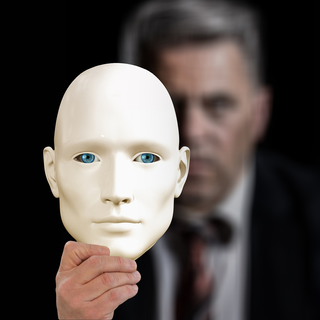Attention
How We Judge Others by Their Clothes
A new study on judging appearances is reviewed.
Posted May 24, 2020 Reviewed by Gary Drevitch

We make numerous assumptions about strangers merely based on their physical appearances or the emotions they express. For example, we might think baby-faced people are naïve, weak, honest, submissive, or warm. And we often consider attractive people competent, intelligent, healthy, outgoing, and sexually receptive. Similarly, we usually view happy individuals as both dominant and social, judge sad and fearful ones as moderately social but low on dominance, and consider angry people as low on affiliation but high on dominance.1
Might a person’s clothing also influence our perceptions? For instance, would you assume a woman wearing designer clothing is more competent than one wearing jeans? Would you perceive a man wearing a cooking apron as less competent than a man wearing a suit and an expensive dress shirt? Even if you were told clothes are unrelated to competence and warned not to let clothes influence your judgment of competence?
In an article published in the March 2020 issue of Nature Human Behavior, authors Oh, Shafir, and Todorov of New York University and Princeton University, present new findings on how economic status cues can affect our perceptions.2 In a series of nine studies, community members and undergraduate students were presented with pictures of random faces paired with either expensive or cheap upper-body clothing and asked to judge these people’s competence. In all investigations, faces paired with richer clothing were judged as more competent, even when the instructions warned participants to ignore clothing in their judgments of competence.
Clothing and judgments of competence
In the first investigation, researchers varied the length of exposure to the pictures to test whether such changes would influence the perceptions of competence. In four studies (3, 6, 7, 8), the investigators also instructed the participants to avoid paying attention to the clothing of people in the picture, telling them to “Focus on the person, and ignore other features such as the clothes.”
The data showed that the duration of exposure or the use of instructions about ignoring the effects of clothing did not make any major difference in the results. Indeed, in each of the first eight studies, over 83% of faces were perceived as more competent when paired with richer (compared to poorer) clothes.
The researchers concluded that the “observed effects cannot be attributed to deliberate inferences based on the clothing,” “appear effortless since they arise at extremely short intervals,” and “are hard for respondents to control.”
In Study 9, the investigators used a choice task. Instead of judging faces one at a time, participants saw a pair of faces and were asked to choose the more competent one. Though the faces were of equal competence rating initially, one was now presented in poorer clothing and one in richer clothing. Half of the participants were also warned that clothing is unrelated to competence but may, nevertheless, influence their judgment of competence. Analysis of data showed similar results as before: About 70% said the person in richer clothing was the more competent of the pair.

Concluding thoughts on judging appearances
Oh and colleagues concluded that clothing, as cues to economic status, influence competence judgments. The effect of clothing on perception was present under a variety of conditions—when the faces were presented for only 129 ms, when participants were warned to ignore the effects of the clothing or even offered rewards for accuracy, etc.
The results agree with previous findings showing that individuals of low socioeconomic status are considered less competent and less worthy of respect.
These biased perceptions can have serious consequences in real-world situations. As the authors note, “Poverty is a place where many challenges—physical, social and psychological—converge: being perceived as of lower competence and disrespected adds to those challenges, and can exacerbate cognitive load and hamper performance, thereby potentially proving self-fulfilling.”
Facebook image: Friends Stock/Shutterstock
References
1. Zebrowitz, L. A., & Montepare, J. M. (2008). Social psychological face perception: Why appearance matters. Social and personality psychology compass, 2(3), 1497-1517.
2. Oh, D., Shafir, E., & Todorov, A. (2020). Economic status cues from clothes affect perceived competence from faces. Nature Human Behaviour. 4, 287-293.


